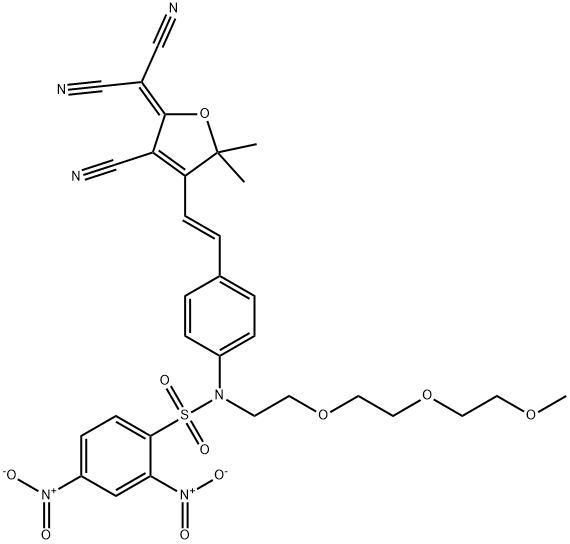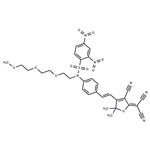Uses
Thiofluor 623 responds upon exposure to thiols with an increase in fluorescence intensity of up to 120-fold. The response is selective for thiols and occurs in aqueous media. In the absence of thiols, the probe is essentially non-fluorescent; thiols cause cleavage of the probe, making a fluorophore with an absorption maximum of 563 nm and emission at 623 nm. The fluorescence quantum yield of the cleaved product, generated in response to thiols, increases in more viscous media, suggesting ideal performance in biological systems and applicability to single-molecule or 2-photon sensing schemes. The thiofluor 623 is cell-permeable and reacts selectively with intracellular thiols.

